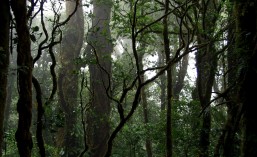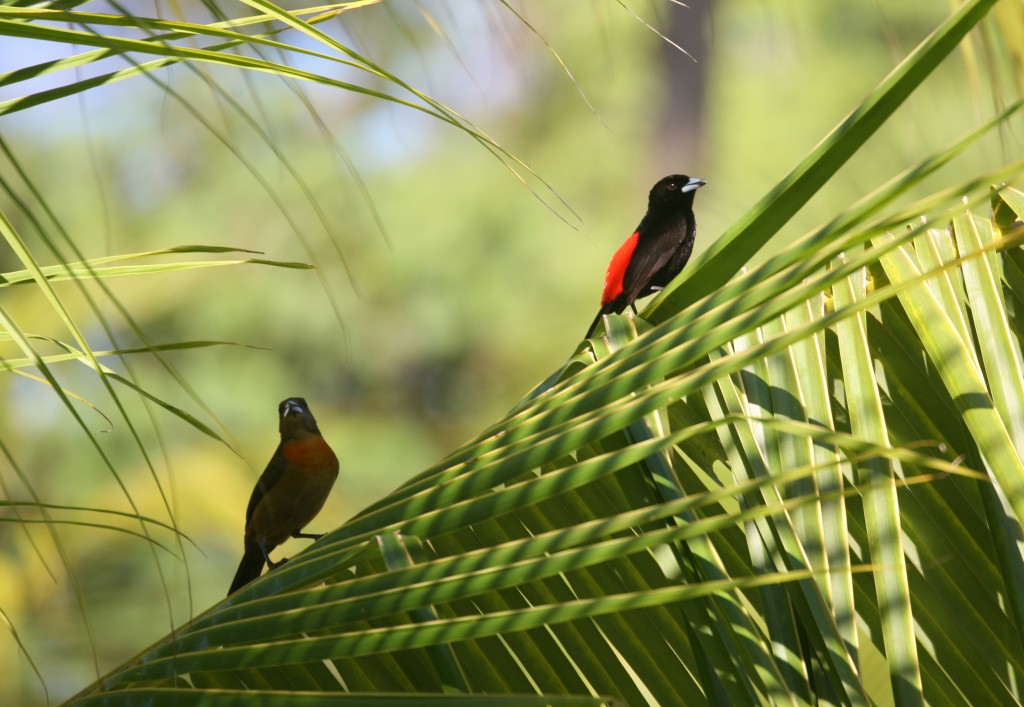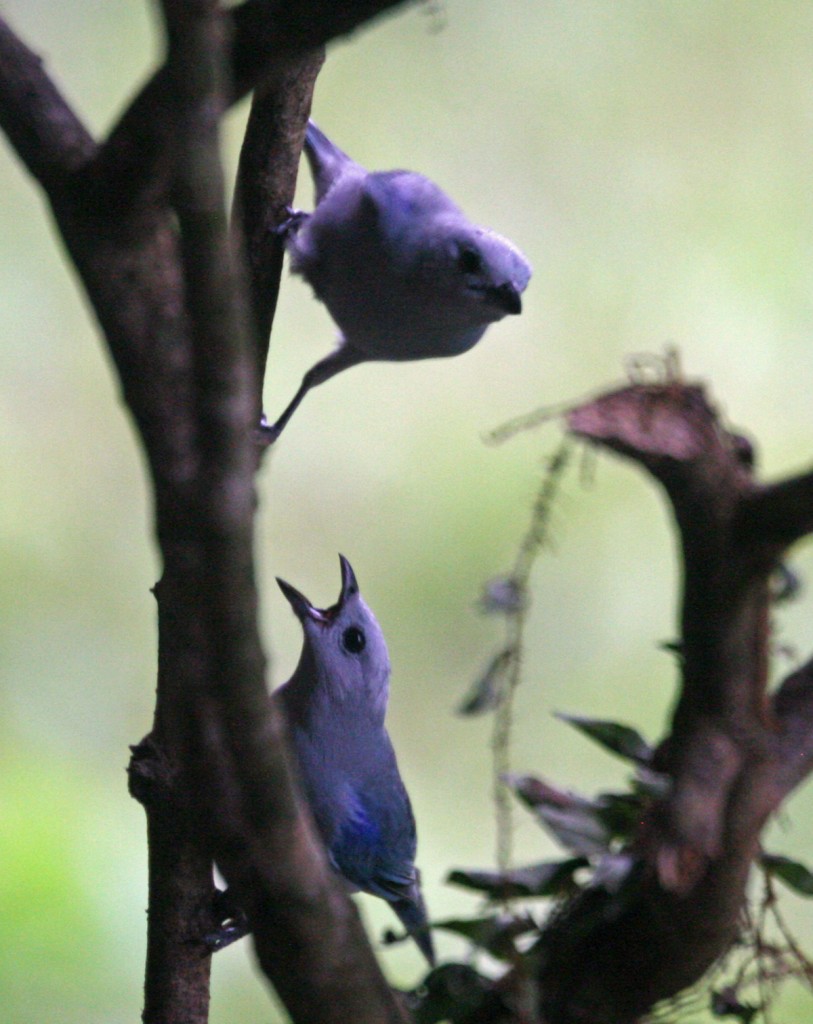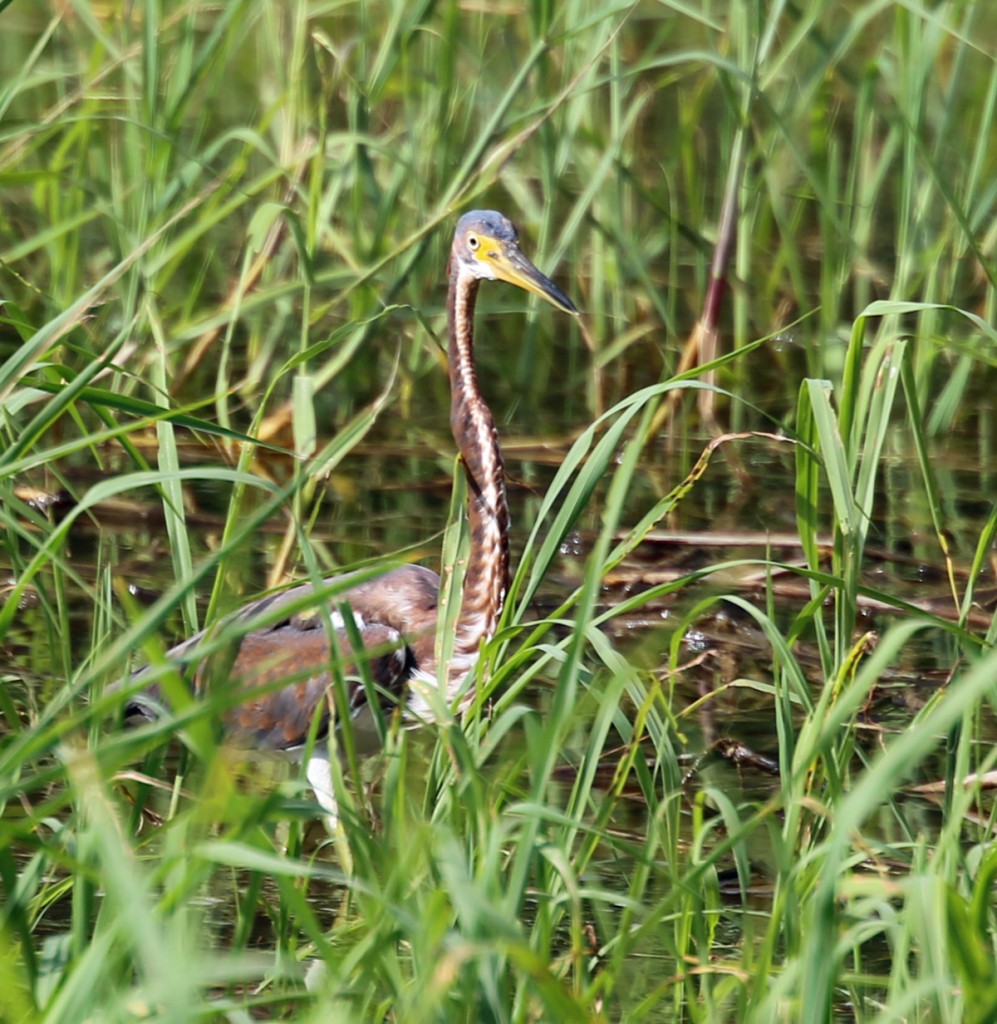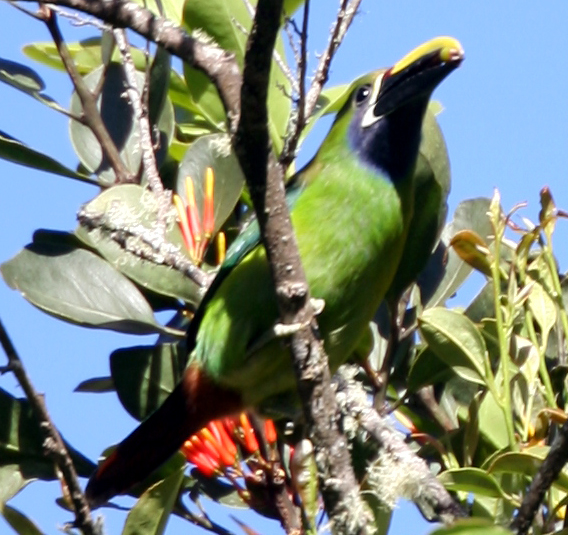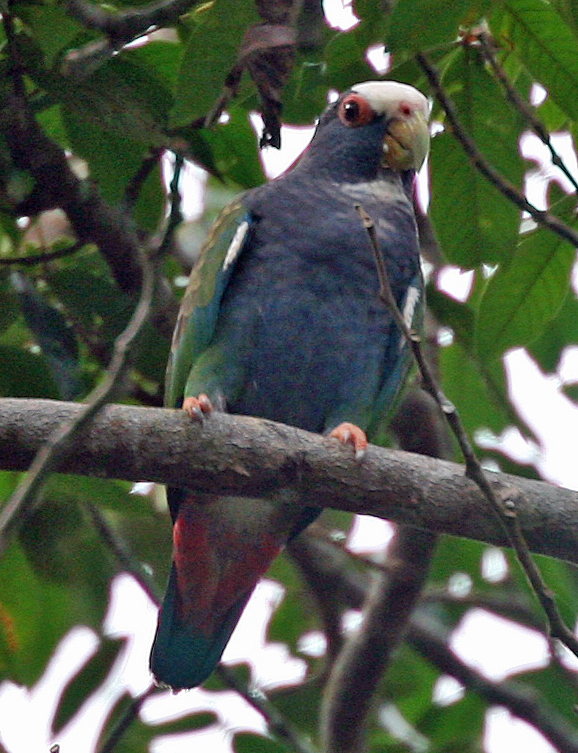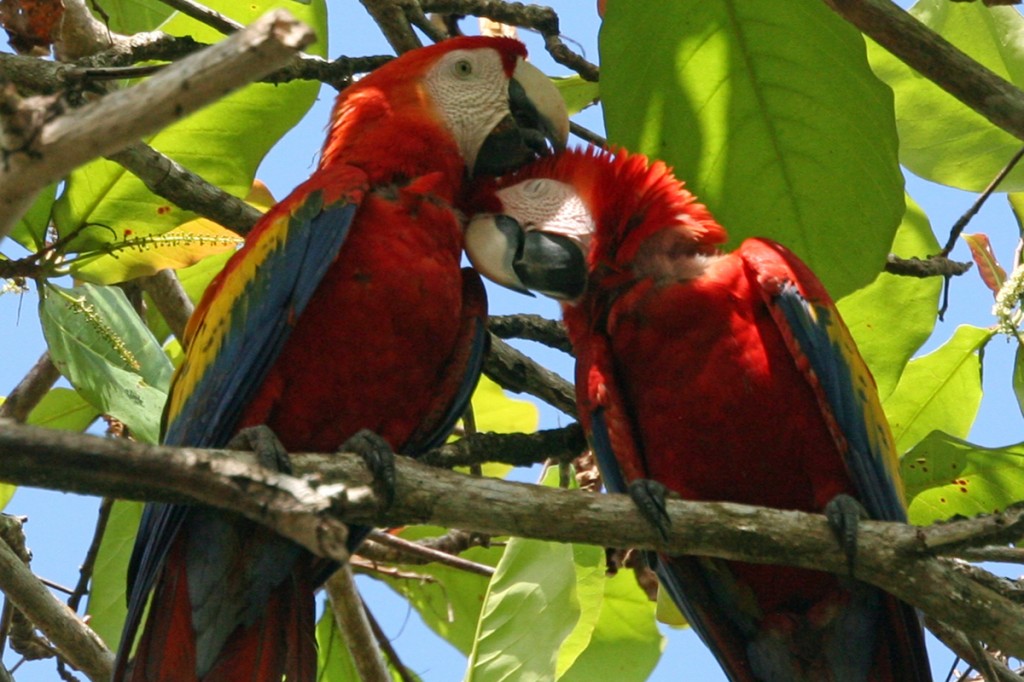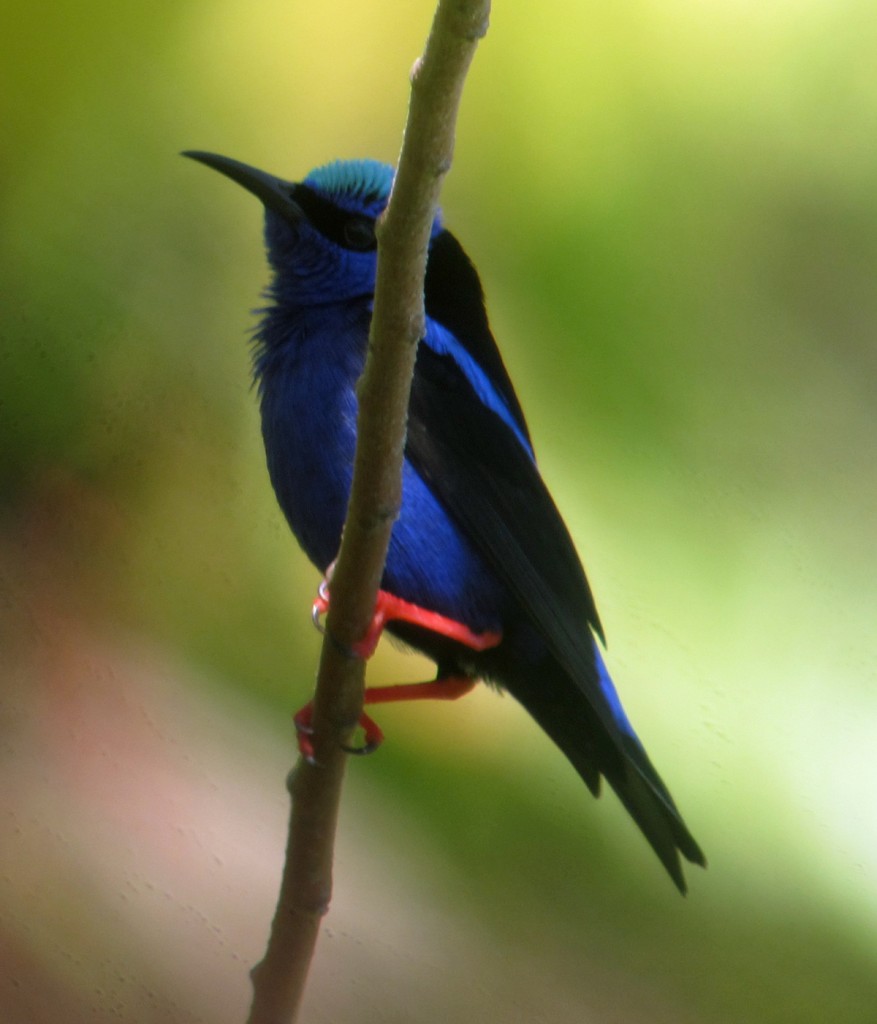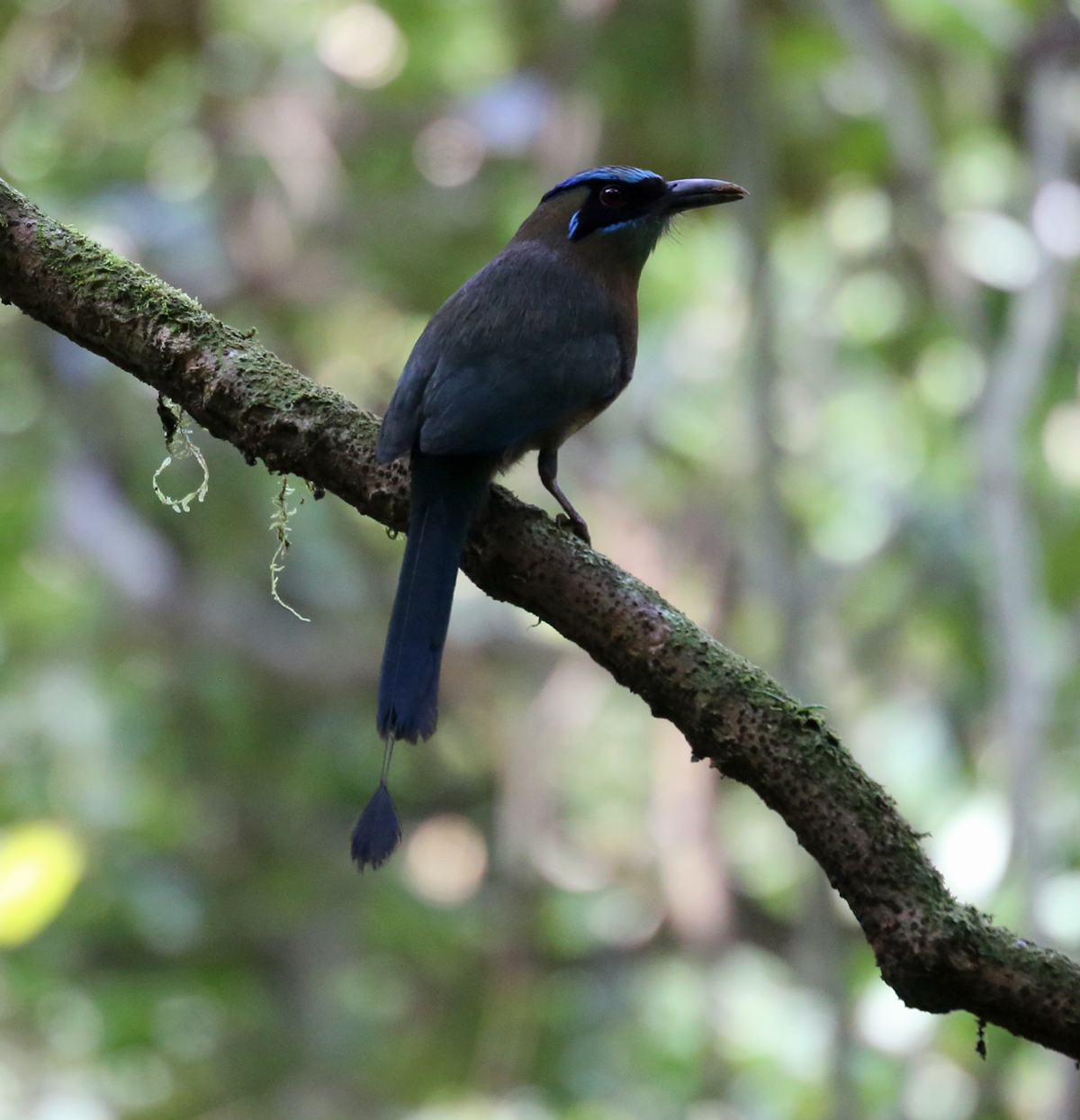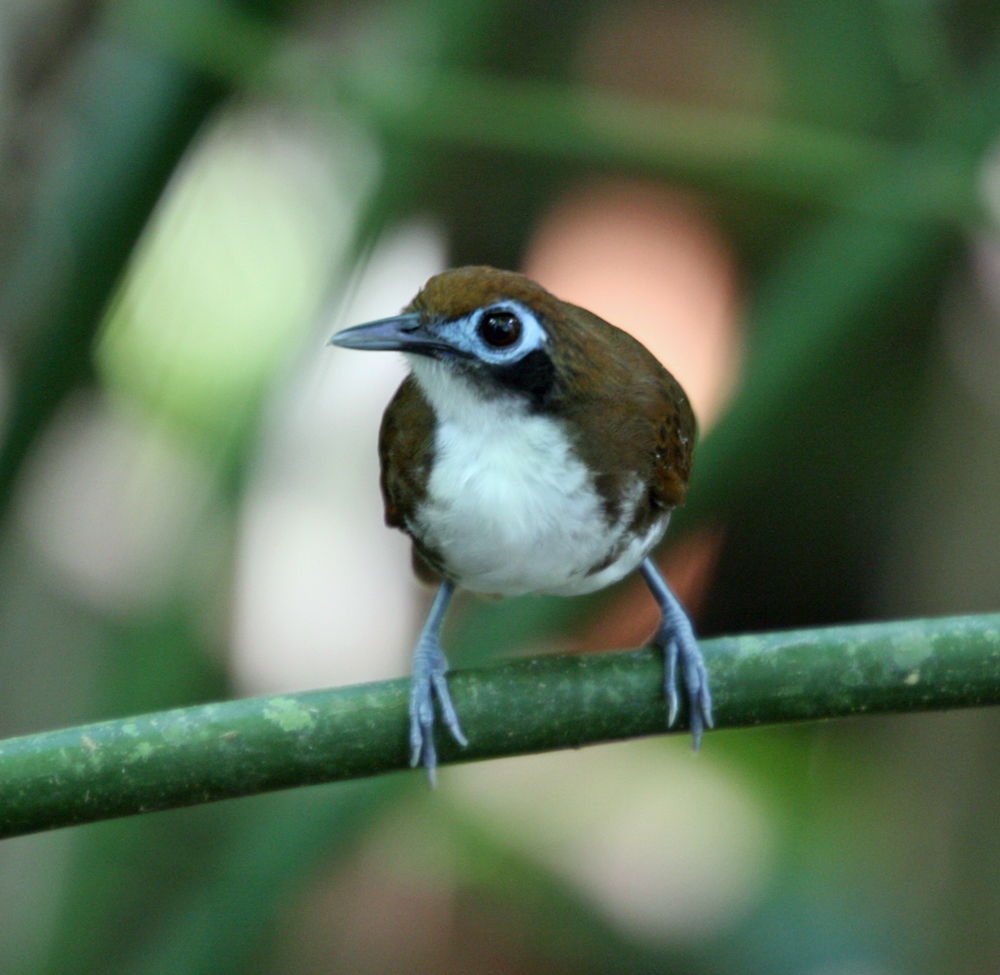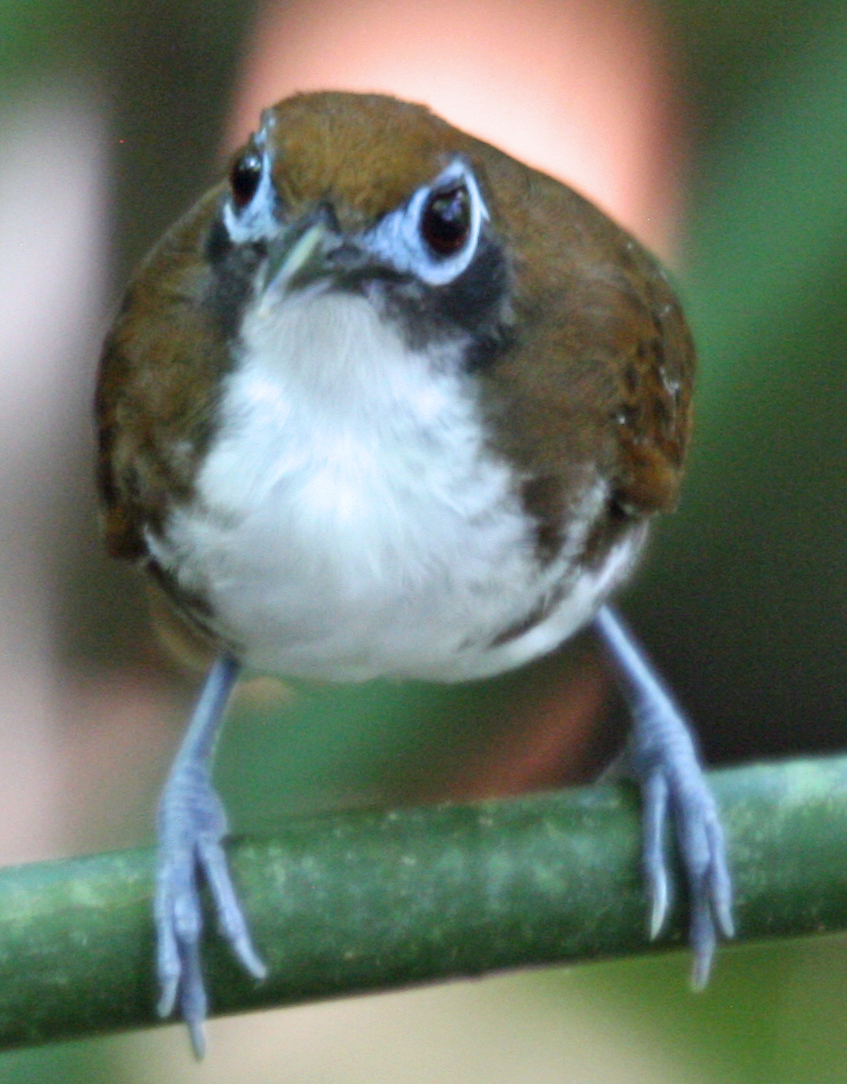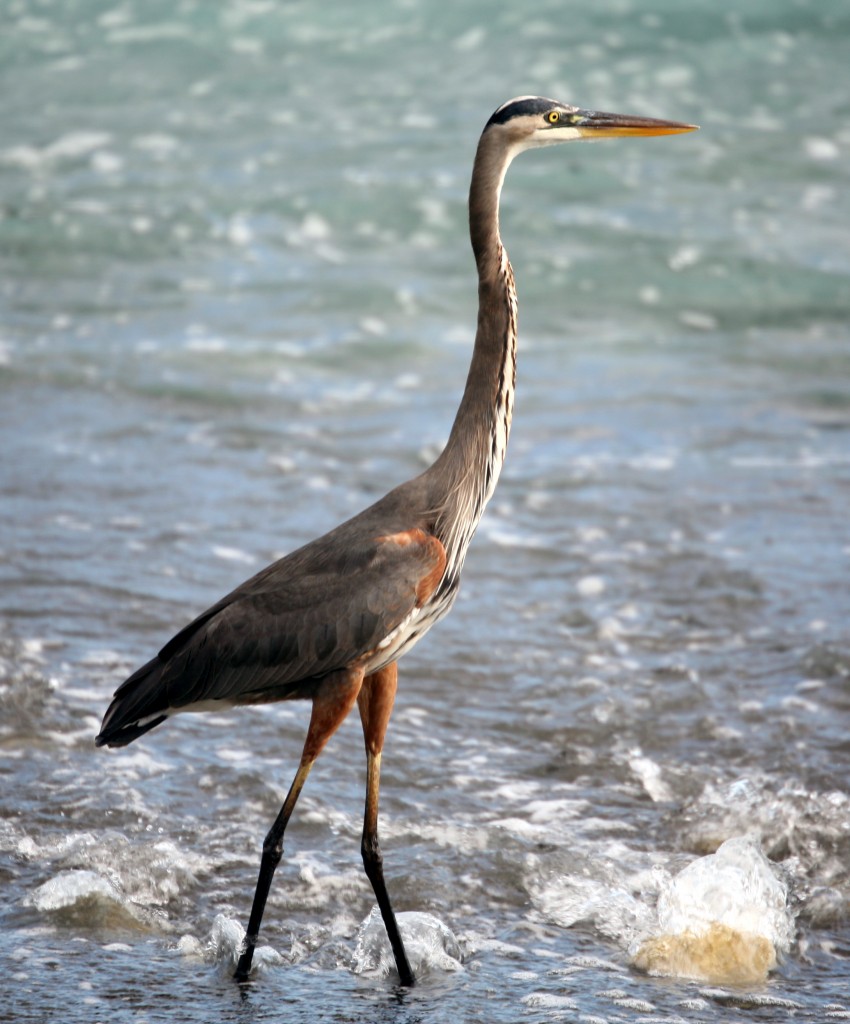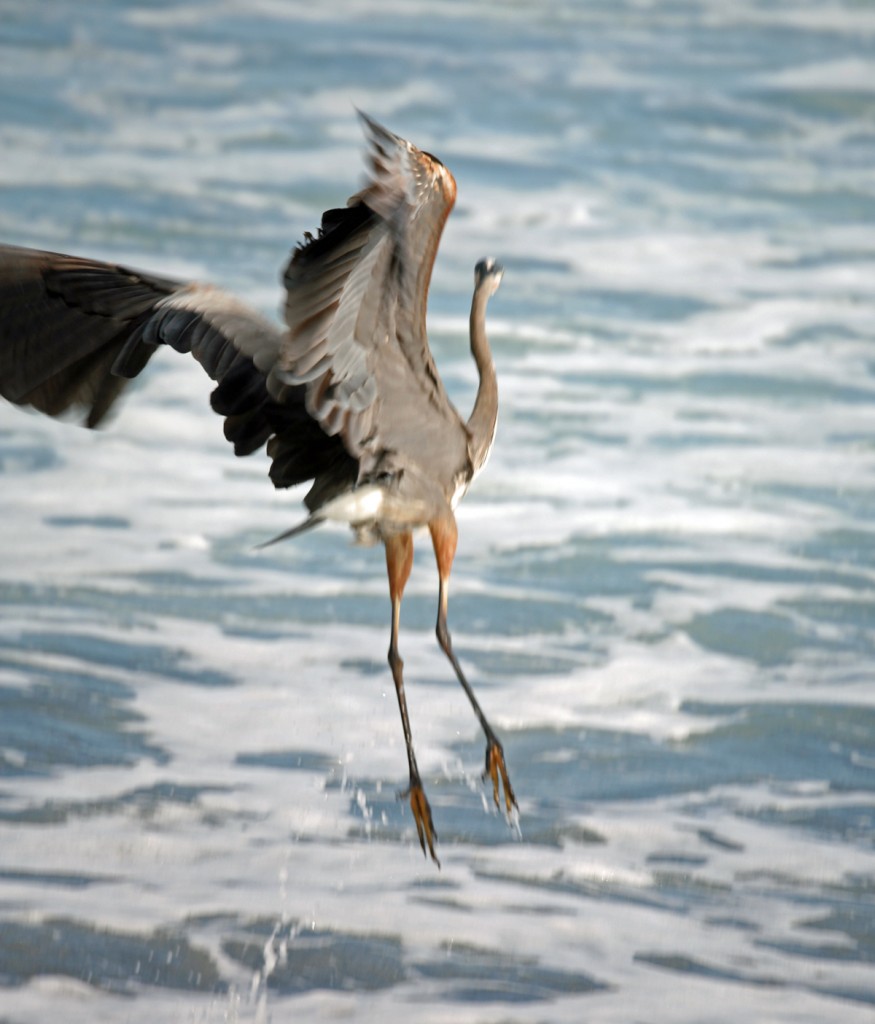In 2004, I caught this pair of Cherrie’s Tanagers (Ramphocelus costaricensis) on camera one morning near the Corcovado National Park. The female’s coloration is obscured by shadow, but the sunlit male on the right, with his bright red rump and light blue bill, is easy to distinguish. The male Cherrie’s Tanager, native to the south Pacific region of Costa Rica, looks virtually identical to the male Passerini’s Tanager (Ramphocelus passerinii), which is found only on the Caribbean side of the country. However, the coloration of the female Cherrie’s Tanager is significantly brighter than her Passerini counterpart. Collectively known as the Scarlet-rumped Tanager, the two species were formerly considered conspecific, but have since been separated.
All media is copyright costaricawildlife.net, 2013.
